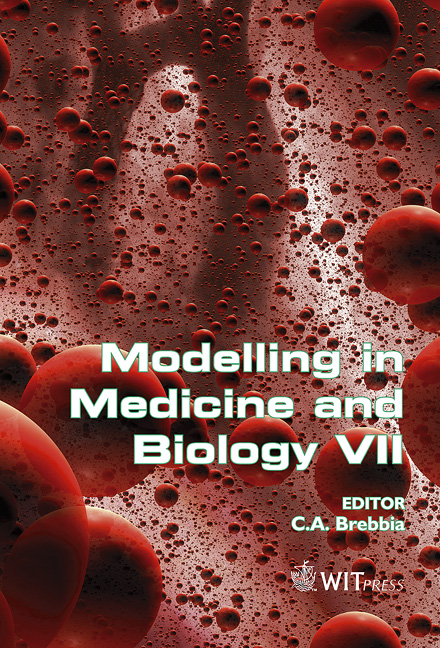The Effect Of Trabecular Micro-architecture On Vertebra Biomechanics: A Finite Element Investigation
Price
Free (open access)
Transaction
Volume
12
Pages
10
Published
2007
Size
656 kb
Paper DOI
10.2495/BIO070111
Copyright
WIT Press
Author(s)
K. McDonald, M. J. Pearcy & C. J. Adam
Abstract
700,000 vertebral fractures occur each year in the United States alone, 85% of which are associated with osteoporosis. This study presents the development of a microstructural model of an entire lumbar vertebral body to investigate the effects of osteoporotic changes in bone micro-architecture on vertebral biomechanics, specifically, the change in stiffness, stresses and load sharing capacity of the core and cortex. A finite element model of a trabecular microstructure was created using a lattice of 3D beam elements with age representative thickness and separation. The vertebral shell was created around the trabecular microarchitecture using 3D shell elements. Three trabecular microstructures were investigated: (i) age less than 50, (ii) age 50–75 and (iii) age over 75 years. A Young’s modulus of 13GPa and Poisson’s ratio of 0.3 were applied for parent bone material. Two loading cases were investigated; (i) a uniform pressure of 1MPa applied to the upper endplate, and (ii) an applied displacement of -1mm for the entire upper endplate in the vertical direction. Model results showed that microstructural variations seen with aging decreased predicted vertebral stiffness from 23kN/mm (age <50) to 0.7kN/mm (age >75), increased maximum principal endplate stress from 5.4MPa (age <50) to 73MPa (age >75, for 1MPa applied pressure), and reduced the proportion of total load carried by the trabecular core from 52% (age <50) to 6% (age >75). The model exhibits realistic behaviour compared with experimental studies, and will be used in the future to explore the mechanics of vertebral compression fractures and treatments such as vertebroplasty Keywords: vertebra, trabecular microarchitecture, FE modelling, osteoporosis.Keywords
vertebra, trabecular microarchitecture, FE modelling, osteoporosis.





